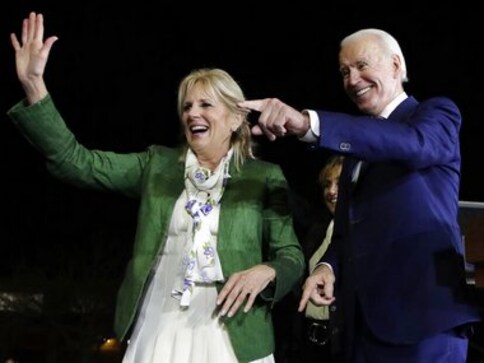
Midday, Jan. 20, 2021. President Joe Biden is now head of state. The country’s face to the world. The commander-in-chief of the armed forces. He holds in his hands the authentication codes needed to use nuclear weapons. As Tocqueville wrote not quite 200 years ago, he is the symbol of national unity.
We can breathe a sigh of relief, as the country is finally back at the gates of normality. Or not.
If there is to be a return to a form of decency, the country Biden is taking over can no longer be the country it was in 2016. The four years that have gone by, the extraordinary weeks of a presidency that have gone by far too slowly, right up until the last few days that have seemed never ending, have all profoundly redefined what this country is all about. Twenty-five thousand tweets, 282 orders and decrees, 400,000 deaths from COVID-19 and 300 golfing trips later, the Biden government is starting on the back foot, due to the many steps backward since 2016.
Firstly, let us examine the country’s judicial and administrative architecture. If there is one area where the Trump government has been exceptionally effective — with the help of the Senate — it is in judicial appointments. With three Supreme Court justices and 54 judges in the federal courts of appeals, in some cases reversing the liberal-conservative ratio of judges, this legacy will redesign U.S. law over several decades. But it goes even further than that. The tradition of “burying” allows some advisers with temporary positions and political appointments to survive regime change by joining the public service and … the “Deep State.” Trumpist ideologues could remain at the highest echelons of the administration and could contribute to slowing the return to normality, while many experienced public servants have been fired (or pushed out) in the last four years, to the point where some departments have been eviscerated, depriving them of skills and experience that are more necessary than ever.
Next, the Biden-Harris tandem is taking the helm of a divided country that has been devastated by the pandemic. As for others before them who have had to deal with world wars, pandemics and economic earthquakes, the task is colossal. But perhaps even more so because of these sometimes abyssal fractures, like the fractures that Abraham Lincoln had to deal with when he called for volunteers to come and defend the capital in 1861 — the last time before 2021 that soldiers were seen sleeping in the Capitol. How can we bring a country back together in which a significant portion of the electorate (nearly 80% of Republicans) were still questioning the legitimacy of Biden’s election just four weeks ago? How can the country be appeased when, out of fear, arms sales have increased by 73% in 2020 compared to the previous year, adding 21 million weapons to the 393 million in circulation in 2019?
The threat comes from within. It is the white supremacists and the anti-government. Constantly growing during Obama’s two terms, this threat gave rise to unambiguous intelligence reports in early fall. Yet this movement uses the vector of Trump populism, which has itself swallowed up the Republican Party. Like a cuckoo, Trumpism has made its nest within the Grand Old Party, ousting the most moderate and endowing the extremes with political legitimacy through the voice of certain representatives within the House. Can a return to normality take place when Trump — armed with his own media (online) and/or party (Patriot) — has announced that he will not fade from political life?
In addition to security instability and the health (and economic) threat in the long run, we must not forget the threat of climate change. The Biden government must begin by repairing the damage here too, rebuilding the web of environmental regulations (regarding water and air, as well as oil and gas exploitation) crushed by the Trump government, regenerating the network of public scientists dismantled over the past four years, and restoring the official discourse around the recognition of climate change. In all this, reintegrating the Paris climate agreement seems almost the easiest thing to do. Rebuilding the legacy of 2016 also wastes precious time — no matter how much goodwill there is.
Finally, in international politics, how can we restore confidence in the United States if we have in our heads that the next president can undo everything with an (inevitable) snap of the fingers? The scale of destruction over the last four years, the effects of which will be felt over the next decade, is at this point immeasurable. Just as 9/11 or the 2003 war in Iraq still define the terms of today’s world, Trump’s policies toward Europe, Israel, Iran, China, Russia, Syria and North Korea will be felt as aftershocks to the initial earthquake. Certain decisions cannot be questioned (such as those in regard to China), while others will take much longer to rebuild than they took to be defeated (as with Cuba). Border abuses, the separation of families and institutionalized brutality will be constantly recalled when the president wants to invoke morality, respect for human rights, the need to promote the rule of law and democracy in the world. What will be the impact on the acceleration of the de-Westernization of the world, the decline of liberal democracy or the (in)stability of the international system? For the question is not whether there will be an impact, but what will its magnitude be? The butterfly effect, over and over again.
A change of style, a change of tone, a change of atmosphere … yet none of this will exempt Biden from the upgrade the country needs, a prerequisite for getting the country back on track. We may have to hold our sighs of relief just a little longer.

Leave a Reply
You must be logged in to post a comment.